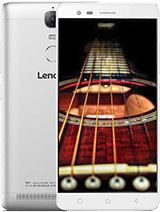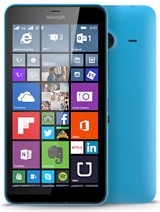Smartphone buyer's guide: April 2016
April 2016

€100-€200
In this chapter, we'll split phones into two groups again, but this time based on screen size instead of price. We have a solid group of 5" phones as well as several 5.5" ones. Depending on who you ask, it's either 5" or 5.5" that's the minimum screen size nowadays, so we take the neutral approach and offer options for both.
The phablets offer more than just a bigger screen - in this price range they typically have better specs too (e.g. 1080p screen resolution, better chipset and so on).
Let's start with the yardstick - the Motorola Moto G Turbo Edition. An improved Moto G (3rd gen), the Turbo is the go-to answer to the question "what phone should I get, but not too big?"
That's because it has it all - fresh Android 6.0 Marshmallow, IP67 water resistance (up to 1m of water for 30 minutes), solid performance with a 64-bit octa-core processor with 2GB of RAM, good camera, taking 13MP photos and recording 1080p videos, 5MP selfies too, dual-SIM and LTE connectivity... Really, the only issue we see with the Moto G Turbo Edition is that it may not be available in your region.
The Samsung Galaxy J5 (the original 2015 edition) has a 5" Super AMOLED screen (720p resolution again). Samsung has perfected the AMOLED and while this one isn't the top model, we found its colors very natural and accurate, on top of great sunlight legibility.
You also get a 13MP camera with 1080p videos and it has a bright f/1.9 aperture, similar (but not equal) to the Galaxy S6. It only has a quad-core processor with 1.5GB of RAM and it's running Android 5.1 Lollipop. The screen and camera do sound attractive, but the Galaxy J5 doesn't quite live up to the Motorola.

Samsung Galaxy J5 | Pros | Cons |
|
|
|
| Preview |
The Xiaomi Redmi 3 brings upscale features while costing the least of the three. It too has a 5" 720p screen, but this time it is wrapped in a metal chassis with a diamond pattern. And get this - it has a 4,100mAh battery, while being almost as thin as the J5 (and much thinner than the G Turbo). And you get fast charging support.
The Redmi continues to trump its Samsung adversary with an octa-core processor (a slightly upgraded version of the chipset used in the Motorola). It comes with 2GB of RAM, 16GB storage and is a dual-SIM phone with a hybrid slot. It runs Android 5.1 Lollipop with customizations across the board, courtesy of Xiaomi.
The camera department of the Redmi 3 is built around a 13MP camera with phase detection autofocus and f/2.0 lens, with 1080p video capture, of course. For selfies there's the usual 5MP/1080p camera.
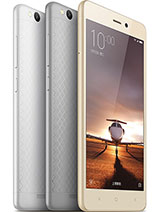
Xiaomi Redmi 3 | Pros | Cons |
|
|
|
| Review |
The Huawei P8lite has a sleek design (7.7mm thin, about the same as the J5). It has everything you'd expect at this stage: a 5" 720p screen, an octa-core processor, dual-SIM and microSD slot, 13MP camera (f/2.0, 1080p) and a 5MP selfie shooter. The battery is small - 2,200mAh - but you get a passable 53h between charges out of it.
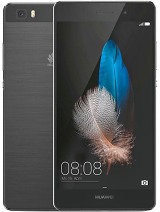
Huawei P8lite | Pros | Cons |
|
|
|
| Review |
A couple of cheaper alternatives (we're talking some €40-€50 down here) include the Microsoft Lumia 640, specifically the 3G dual-SIM variant (but you can get LTE for some extra cash). You get to enjoy a first-party OS experience, including an upgrade to Windows 10 Mobile (and the limited app selection that comes with Microsoft's platform).
The 5" 720p screen has ClearBlack tech, which reduces glare in bright sunlight, and Gorilla Glass 3. The camera is an 8MP shooter with 1080p video capture and you get a lowly 1MP selfie camera.
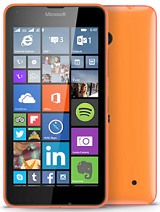
Microsoft Lumia 640 Dual SIM | Pros | Cons |
|
|
|
| Review |
Then there's the Huawei Honor Holly 2 Plus. Its limited regional availability can make getting one a tall task, but if you can get it, you'll enjoy a 5" IPS screen of 720p resolution, a 13MP f/2.0 camera and 5MP selfie camera and a generous 4,000mAh battery. The chipset is nothing special (similar to the Galaxy J5) and you'll be running Android 5.1 Lollipop with Huawei's EMUI 3.1, but you'll save some cash doing it.
Time to expand to 5.5" and we won't spend much money for the upgrade. In fact, last year's Xiaomi Redmi Note 2 costs as much as the smaller (but newer) Redmi 3. It offers a 5.5" 1080p screen and a faster chipset to boot.
The camera is pretty similar - 13MP f/2.2 with phase detection and 1080p video plus a 5MP selfie cam (video limited to 720p). This older model has a "small" battery, though, only 3,060mAh (but it's removable, for what it's worth).

Xiaomi Redmi Note 2 | Pros | Cons |
|
|
|
| Review |
Xiaomi's rivals over at Meizu have the m1 metal to offer. Despite the name, the phone is actually closer to the m2 note, but at least the phone is made of metal.
You get a similar 5.5" 1080p screen (but with a scratch-resistant glass), the same chipset and similarly-customized Android (5.1, but still) and a similar 13MP f/2.2 camera with 1080p video and 5MP selfies (this time around with 1080p video support). The battery is barely any bigger (and it's sealed), but you do get a better battery life out of it.

Xiaomi Redmi Note 2 | Pros | Cons |
|
|
|
| Review |
€100-€200 phones we skipped and why
For the smaller 5" phones, the Sony Xperia M4 Aqua nearly made the cut. Its IP68 certification used to be impressive in this price range, plus you get a solid 5" 720p screen, an octa-core processor, 13MP/1080p camera and Xperia's traditionally solid battery life (81h Endurance on a 2,400mAh battery!). Sony is good with the upgrades too and a Marshmallow update has been promised.
On the other hand, the Moto G Turbo is already at Marshmallow and it offers much of the same features at a lower cost. Still, Sony fans will find a solid performer in the M4 Aqua.
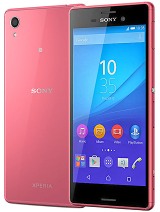

Sony Xperia M4 Aqua • Sony Xperia M4 Aqua Dual
The Lenovo Vibe K5 Note is a solid alternative to the Meizu m1 metal. It too has a metal body, but with a fingerprint reader on the back, something no other phone on the list so far has offered. You get a similar (slightly faster) chipset, similar camera (but with 8MP selfies), bigger battery too. Our only worry is that it can be hard to find in stores in most countries.
For Windows devices, there's the Microsoft Lumia 640 XL with a 5.7" screen, but unfortunately it only has 720p resolution. A 13MP camera with f/2.0 Carl Zeiss optics might make you feel better, plus the selfie cam is workable (unlike the smaller 640) - 5MP/1080p. It's the screen that killed it for us, though.
Reader comments
- ithehappy
- 27 Sep 2016
- X%D
Time to update this segment guys. Its almost October, and we need a new, refreshed guide.
- AnonD-541790
- 27 May 2016
- Hkt
If you love speed...... Get an iPhone.
- AnonD-541790
- 26 May 2016
- Hkt
If you love speed...... Get an iPhone.


